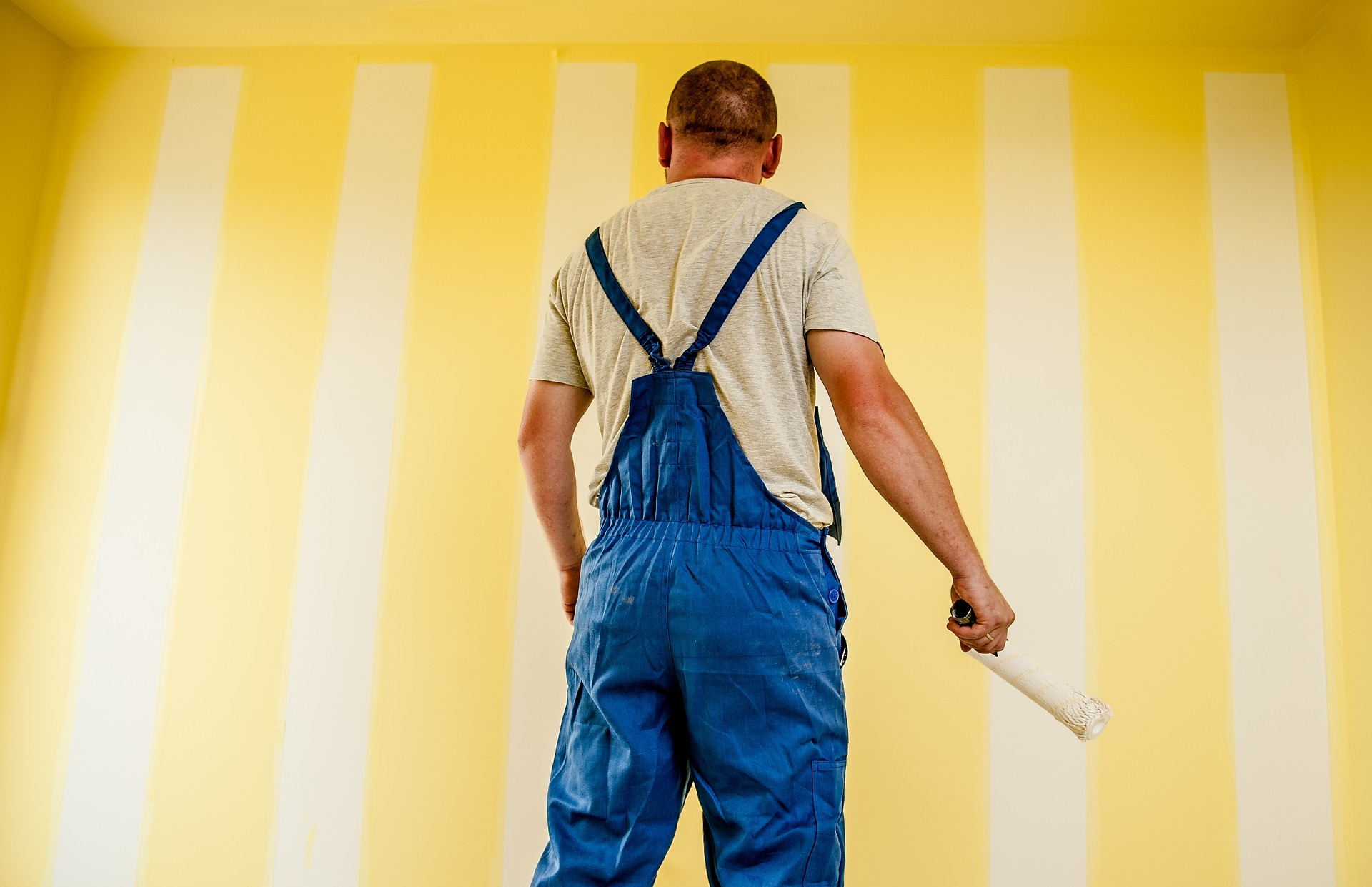The garage usually receives the least attention during house construction, yet some people use the garage as a study room while others use it as a fitness room. Still, other people use the garage space as storage for equipment such as lawn mowers and gardening tools. Remember, some famous companies started in the garage, so it would make sense to treat this space as important as any other room in your house.
Most of the time, the garage is just next to the front door. It should maintain a certain aesthetic standard to improve your home’s curb appeal. Ensure the garage has a welcoming look every time you open it to park your car, or use it for quiet studies, a fitness session, or work.
Your garage paint color largely depends on the atmosphere you want to create inside. Just like any other room in your house, ensure to create a calm ambiance that motivates you to do whatever you are using your garage for. This guide will help you choose the right paint for your garage walls.
The Best Garage Wall Paint
- The best drywall paint: Acrylic latex-based paint
- The best garage ceiling paint: Interior latex paint
- The best garage floor paint: Epoxy-type coating
- The best exterior paint for garage doors: Same paint color as your home’s exterior walls
Acrylic Latex or Oil-Based Paints for Garage Drywall?
It is tricky to paint bare drywall for the first time. Before applying the top coat, you should apply a drywall primer on new, damaged, stained, or previously glossed drywall. Professional painters use drywall primers that contain polyvinyl acetate (PVA). The PVA primer seals the drywall mud and ensures that you achieve a uniform color, finish, and lasting gloss on your garage walls with fewer coats of paint. Acrylic latex-based primers dry faster than oil-based primers, making the garage wall painting job more manageable.
Interior or Exterior Paint for Garage Walls?
Many people believe that it is not necessary to paint garage walls. However, the right garage interior paint makes the space look clean and prevents a build-up of stains instead of unpainted drywall. As a rule, your home’s exterior paint color scheme dictates how you paint your garage door to create a uniform look and harmony.
However, you can choose a different color for the interior garage walls. Avoid using exterior paint on the interior walls of your garage as they contain anti-mildew additives that can give you allergies in the garage. Always go for water-based latex paint, as it has a minimal odor and dries up fast.
What Is the Best Color for Garage Walls?
When choosing paint for garage walls and ceilings, it is crucial to go for colors that enhance the lighting in the garage. A garage wall painted a light color will produce a good reflection and create a mindful experience for your family. However, avoid bright white paint on your garage because it exposes minor scratches and grease stains on the wall, forcing you to clean it continually. Other neutral colors such as beige, gray, and tan work in the same way and are way easier to clean than white.
Factors to Consider When Choosing a Garage Wall Paint
Wall Texture
Different garage wall textures require different types of paint. This is because different types of paint adhere differently to different kinds of surfaces.
- Metal Surfaces: Oil-based paints are ideal for metallic wall surfaces because they adhere to the surface quickly. Applying an oil-based primer before applying garage wall paint is advisable to minimize the risk of rusting. If your garage door is made of metal, use oil paint that matches your front door color.
- Concrete Walls and Brick walls: Water-based paints are the most ideal for concrete and brick garage walls because they dry fast and are easy to apply. Fill any cracks on the walls before applying the paint. However, your garage floor sustains the most weight and spills and works better with epoxy coatings than with paint. You can consult professional painters near you for help.
The concentration of VOCs in Interior Paint
Volatile organic compounds, or VOCs, can seriously impact your health and well-being. Mild exposure to VOCs causes headaches and irritation to the eyes, nose, and throat. However, prolonged exposure can leave you with serious health issues such as memory loss and cancer. Since most garages have poor ventilation, it is vital to choose paint with low or zero volatile organic compounds for your garage space.
Longevity of the Paint
How long the paint lasts is determined by several factors, such as priming, preparation of the surface, paint brand, and the number of coats applied.
- Preparation of the Surface: Before painting your garage, take some time to remove old paint from the walls. The garage floor also needs proper sanding before applying the epoxy coating. If applying more than one coat of paint, always ensure the bottom coat of paint dries completely before applying a new coat.
- Priming: Priming helps your paint stick to the surface for longer, even with thin coats of paint.
- Paint brand: Find the best manufacturer of high-quality paint for your paint job. A professional painter can help you choose the best paint for garage walls in Ohio.
- Number of paint coats: You need at least one coat of paint for garage walls that have already been primed. However, if you do not use a primer, you will need at least two coats to give your color a long-lasting look.
4. Paint Drying & Cure Time
Paint drying time is the time it takes before it is ready to touch. The cure time is the time the garage paint takes to dry to touch. The curing time is the time it takes to reach maximum hardness for the application of a new coat.
The dry time is always indicated on the top of the paint container by the manufacturer. Cure times are typically longer than dry times. Oil-based paints dry to the touch in 6-8 hours and cure in up to 24 hours, whereas latex paints dry to the touch in about 4 hours and cure in about 1 hour.
Type of Finish
When choosing a top coat for your garage painting project, consider the work taking place in the garage. The garage is susceptible to stains, dirt, scratches, and the spilling of harsh chemicals. The walls must be washable, stain-resistant, fire-resistant, and scuff-resistant.
Though there are many types of finishes for interior walls, satin tends to do better for garage walls as it holds up to scuffs and, at the same time, conceals stains on the walls. But if you want your garage to be brighter and have more natural light, semi-gloss and high-gloss finishes are best.
Steps for Painting Your Garage Walls
If you’d like to apply garage wall paint, follow these steps.
Step #1: Clear the Garage and Ventilate It.
Before you start painting your garage, ensure that you remove everything from the space. Clearing the garage space will prevent paint from coming into contact with the other items in the garage. Additionally, cover the garage floor to prevent paint from sticking to the concrete. Open any windows and the garage door after removing everything from the room to allow proper air circulation. Having enough ventilation keeps you from getting sick from breathing in interior paint fumes while painting your garage.
Step #2: Clean the Walls and Floor
Remove any dirt or old paint from your garage walls before you begin painting. Because most people do not finish building the garage during the house construction phase, the garage is dirtier than any other room in the house. Even a finished garage accumulates dirt and grease stains from the car. Regardless of whether your garage is painted or not, use a shop vac. A shop vac is great for picking up any wet messes or nails that may be lying around.
After you’ve picked up the debris and dirt, wash the garage walls with a mixture of water and dish soap. Ensure the water is soapy enough to remove all debris and dirt from the walls because paint does not stick well on dirty surfaces. However, it is not advisable to use a pressure sprayer and harsh chemicals because they might damage the wall. Wait for the walls to dry completely before proceeding to the next step.
Step #3: Prime the Garage Wall Surface
After cleaning the walls, the next task is priming the drywall and garage doors. If the surface has been painted before, you must first determine whether it was painted using oil-based paint or latex paint.
The simplest way to tell is by washing a small portion of the wall with a mild detergent, after which you dip a Q-tip in alcohol and rub it on the wall in back and forth motions. If the paint comes off, it has a latex undercoat. If it doesn’t come off, it was painted with oil-based paint. The techniques for priming unpainted drywall and a previously painted wall differ.
- Priming the Drywall: Bare drywall requires a good surface primer to bring out a gorgeous look after applying paint. It would be beneficial to use a PVA-containing drywall primer to seal the pores and ensure the paint coat lasts longer. If you apply interior paint on garage walls without priming them, most of the paint will soak into the pores of the drywall and leave the walls with an uneven look. You will also end up using more coats of paint to bring out the color of the paint.
- Priming Previously Painted Walls: If the walls were already painted with either latex or oil paint, there is no need to apply a primer. However, you can prime the wall if it has large stains. Alternatively, use two or more coats of paint to conceal the stains.
Step #4: Apply the Paint
Now that you have made all the necessary preparations, it is time to apply your paint with a paint roller or brush and transform your garage. Use the proper painting techniques to give your walls a seamless look, and avoid leaving brush marks or paint lines on the wall.
Step #5: Apply the Top Coat
Exactly how many coats of paint should you apply to your garage walls? Well, the garage can get very busy. To ensure that the paint lasts longer, use at least one coat of paint with a primer combination or two coats on a previously painted wall.
Want to Give Your Garage Wall a Professional Finish? Call the Ohio Painting Company for Help
There is more to garage painting than the paint itself. Even with the best interior paint, your painting project can fail due to a lack of the proper tools and a failure to prepare the surface well. Painting the garage is not the same as painting the interior walls of your house. The garage is prone to heavy grease staining and abrasion. If you want to give your garage a neat look while maintaining its purpose, get a professional painter to give you the perfect finish.
The Ohio Painting Company ensures you get value for every dollar you invest in your garage painting project. As painting experts who have delivered high-quality work for both residential and commercial painting jobs, we are equipped to take care of your garage painting needs, from wall deglossing to garage floor sanding, up to the top coat application. We use high-quality paint from leading manufacturers to ensure a 100% satisfaction guarantee.
Contact us at (937) 409-4443 for a free consultation with one of our painting experts in Ohio today.






